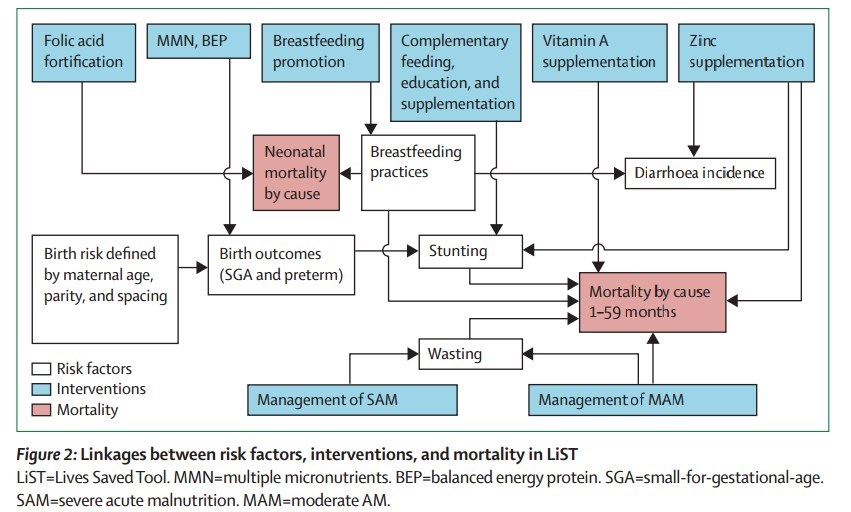Maternal supplementation (vitamin D is an emerging topic) Lancet
Evidence-based interventions for improvement of maternal and child nutrition: what can be done and at what cost?
The Lancet, Volume 382, Issue 9890, Pages 452 - 477, 3 August 2013
Prof Zulfiqar A Bhutta PhD a Corresponding AuthorEmail Address, Jai K Das MBA a, Arjumand Rizvi MSc a, Michelle F Gaffey MSc b, Neff Walker PhD c, Prof Susan Horton PhD d, Prof Patrick Webb PhD e, Prof Anna Lartey PhD f, Prof Robert E Black PhD c, The Lancet Nutrition Interventions Review Group, the Maternal and Child Nutrition Study Group
Summary
Maternal undernutrition contributes to 800 000 neonatal deaths annually through small for gestational age births; stunting, wasting, and micronutrient deficiencies are estimated to underlie nearly 3·1 million child deaths annually. Progress has been made with many interventions implemented at scale and the evidence for effectiveness of nutrition interventions and delivery strategies has grown since The Lancet Series on Maternal and Child Undernutrition in 2008. We did a comprehensive update of interventions to address undernutrition and micronutrient deficiencies in women and children and used standard methods to assess emerging new evidence for delivery platforms. We modelled the effect on lives saved and cost of these interventions in the 34 countries that have 90% of the world's children with stunted growth. We also examined the effect of various delivery platforms and delivery options using community health workers to engage poor populations and promote behaviour change, access and uptake of interventions. Our analysis suggests the current total of deaths in children younger than 5 years can be reduced by 15% if populations can access ten evidence-based nutrition interventions at 90% coverage. Additionally, access to and uptake of iodised salt can alleviate iodine deficiency and improve health outcomes. Accelerated gains are possible and about a fifth of the existing burden of stunting can be averted using these approaches, if access is improved in this way. The estimated total additional annual cost involved for scaling up access to these ten direct nutrition interventions in the 34 focus countries is Int$9·6 billion per year. Continued investments in nutrition-specific interventions to avert maternal and child undernutrition and micronutrient deficiencies through community engagement and delivery strategies that can reach poor segments of the population at greatest risk can make a great difference. If this improved access is linked to nutrition-sensitive approaches—ie, women's empowerment, agriculture, food systems, education, employment, social protection, and safety nets—they can greatly accelerate progress in countries with the highest burden of maternal and child undernutrition and mortality.

PDF is attached at the bottom of this page
Comments by VitaminDWiki
So far they are ignoring stunting due to low levels of vitamin D
They appear to be unaware that giving large doses of Vitamin A blocks much of the benefits of vitamin D
